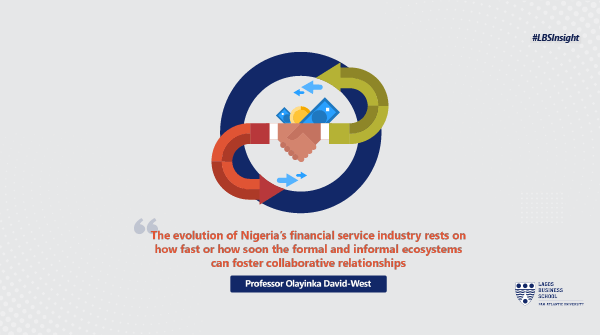The financial inclusion discourse revolves around three customer segments: the banked, the unbanked and the underbanked.
The banked refers to consumers with bank accounts or digital wallets in deposit money (or microfinance) banks and mobile money operators, respectively. The unbanked are consumers, without a bank account or digital wallet, who conduct all their financial transactions independently. The underbanked segment, which is the focus of this article, refers to financial service consumers who use informal and unregulated financial services provided by savings groups (like the Alajos and Esusu) and cooperatives. It could also refer to consumers who may have a bank account to their name, but rarely if ever, use it and opt to empty their accounts once they receive any funds in them.
The Enhancing Financial Innovation and Access (EFinA) 2018 Access to Finance Survey pegs the number of these underbanked adults at about 14.6 million, a population considered as low hanging fruits for financial inclusion efforts.
How? Firstly, nearly all consumers in the underbanked segment are already banked by proxy. Every time they opt to save with a local savings group or cooperative, their funds eventually end up within the formal financial service ecosystem, usually via the cooperative’s bank account.
Secondly, banks have been known to develop and deploy solutions which help their customers do business better within different industries — education, engineering, oil and gas, etc; as well as bring in more deposits. However, we are yet to witness key solutions, specifically targeting the informal financial service industry.
This is a big opportunity for both formal and informal providers and it creates exciting possibilities for financial inclusion. The informal financial service sector is a 14.6 million customer market currently being served by diverse and unregulated financial service providers. We have informal savings clubs and cooperatives who have carved out a niche for themselves, targeting select groups and individuals. There are also the rotating savings clubs that are near-ubiquitous among Nigerian market traders, then, the local creditors and loan sharks.
For several reasons, these informal providers are attractive to a lot of people, especially people who operate majorly within the informal economy (which is estimated to constitute about 60 percent of the entire Nigerian economy according to the International Monetary Fund (IMF)). These informal providers would be a lucrative vertical for the formal financial service sector because they have already done a lot of the heavy lifting of financial inclusion. They have the networks, the market knowledge, the customer base and a system that works. Through collaboration and partnerships, formal providers can leverage these strengths and resources towards a common goal.
For example, a programme led by CARE International across sub-Saharan Africa linked over 5,000 informal savings groups to banks while supporting the banks to develop products that meet the needs of the group members. These partnerships enhanced the benefits of the informal providers and reduced their risks while helping thousands of women attain greater financial security and access other financial services including insurance, mobile banking and others.
In Ghana, Tanzania and Zambia, Savings at the Frontier (SatF), a multi-year partnership between MasterCard Foundation and Oxford Policy Management, helps formal financial service providers to find ways to link with informal savings mechanisms (ISMs) in a mutually beneficial partnership that leads to better service delivery to consumers. By joining forces, actors within the two ecosystems have been able to reach more customers and provide better products and services to them. With this, financial inclusion is advanced while creating win-win partnerships.
There’s a school of thought that says banking will change through collaboration and not just the disruptive power of fintechs and we agree with this, especially as it concerns the underbanked. Collaboration would be a more optimal needle-moving strategy. The evolution of Nigeria’s financial service industry rests on how fast or how soon the two ecosystems — the formal and informal — can foster collaborative relationships.


